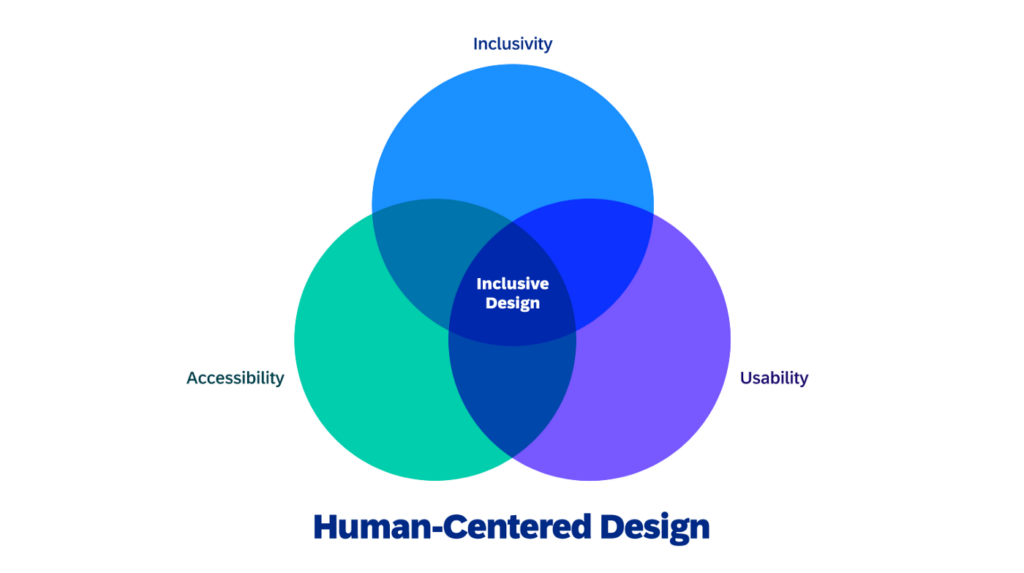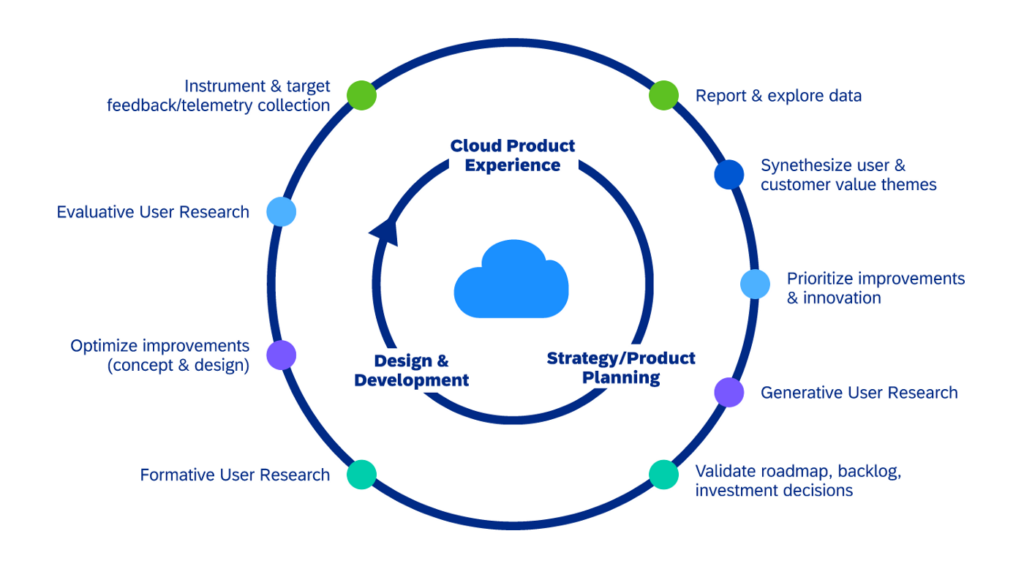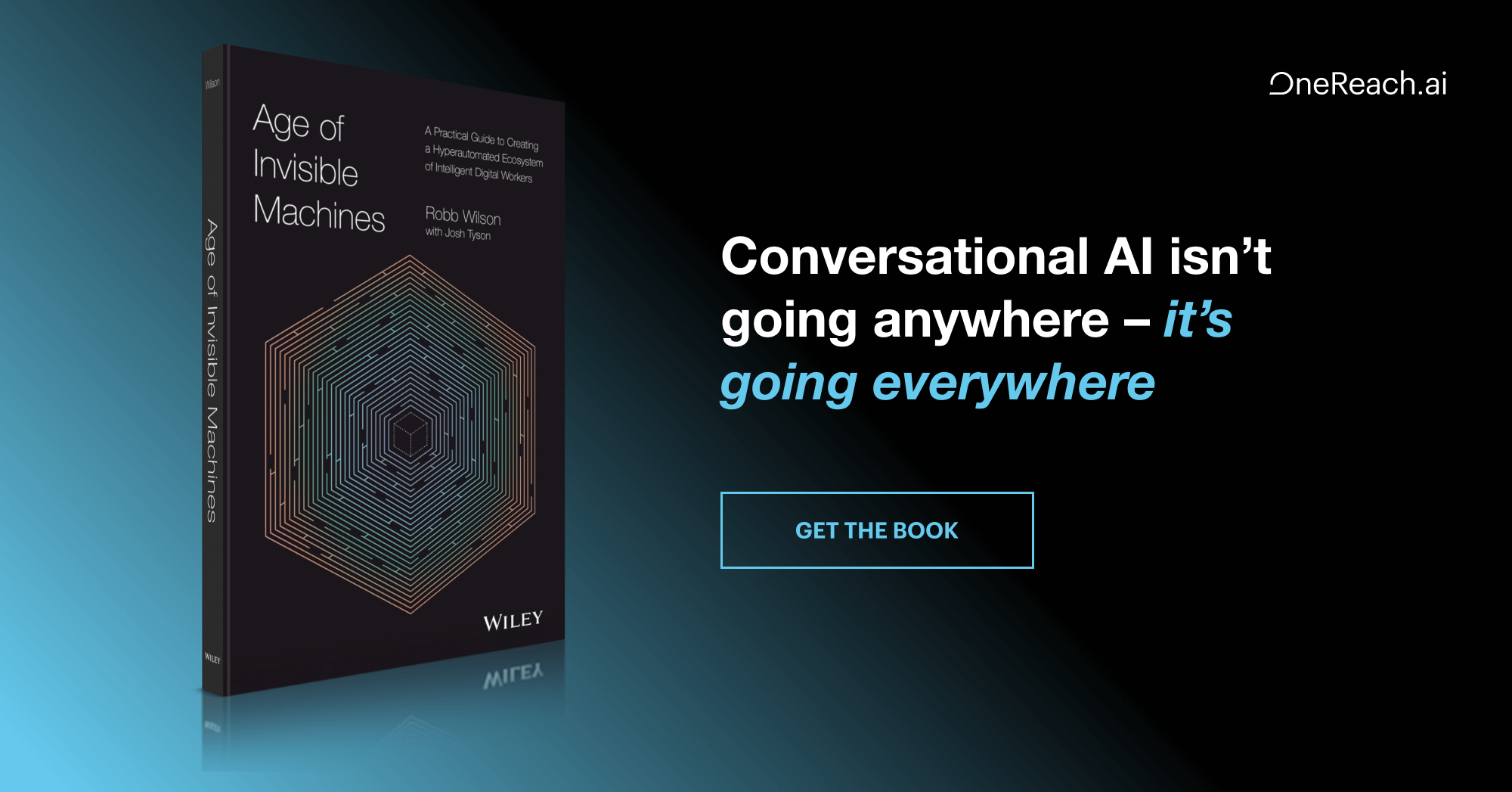Companies that engage users in continuous conversation across their product experiences lead their industry by significant margins. That’s because understanding and acting upon our end users’ needs, expectations, and behavior allows us to create more engaging product experiences.
Mature research practices recognize that driving user insights into product requires us to extend our empathy to the product teams we work with, and understand the product challenges that they as designers, product managers, and developers are trying to solve.
Here are five user research trends and highlights that inspire our global SAP User Research practice and empower our teams with actionable insights that inform and enable measurable product experiences that all people love.
Trend #1: Remote user research is (finally) the new norm
The future of work is hybrid, and the growing trend of remote user research is here to stay. As applications and tools mature to meet these hybrid and remote work realities, user research is moving away from in-person methods to reflect today’s mobile work lives.
The global SAP Research practice has embraced this change with the rapid adoption of tools like UserZoom and virtual whiteboarding tools like FigJam and MURAL to include our users’ and customers’ voice to shape product experiences. Last year alone, our research labs led almost 200 remote studies with over 5,000 participants on UserZoom — an increase of about 80%.
Trend #2: Accessibility, diversity and inclusion are becoming more mainstream
According to the World Health Organization, 1 billion people (that’s over 15% of the global population) live with some form of disability. Our research teams have been working towards a future where inclusive research is a foundational part of our practice.
To create experiences every person loves to work with, we are continuously learning about what the SAP user experience is like for a diverse range of people. Our research studies intentionally involve people with a range of abilities, from different cultures and backgrounds, and from different parts of the world.

Our SAP User Research and Insights teams is also working hard to deliver deep-dive trainings, a video series, and an Inclusive Research Playbook focused on recruitment criteria, templates, and processes to upskill our researchers on conducting inclusive research. We look forward to rolling out this content to the general public in the coming months.
Trend #3: The demand for measurement and evidence-based product experience strategy continues to grow
We expect business leaders to double down on reducing risk and maximizing opportunity with hard facts and quantifiable data. As companies continue to invest more in design and grapple with market uncertainties, executives will expect product design teams to build user experience strategies based on metrics, user feedback, and best practices.
User Experience metrics (KPIs) enable better product decisions that grow user and customer satisfaction and value. At SAP, our Insights teams focus on measuring leading and lagging experience indicators to provide design and development teams with experience data to guide product experience priorities and quality.
User experience measures like task completion rates, error rates, and completion times are clear indisputable measures to align product teams on user-centered product experience quality. These are basic non-controversial leading product experience (PX) indicators to predict the users’ experience, usage, adoption and renewal rates to deliver better business outcomes.
Usability scores for User Experience (UMUX), Net Promoter Scores (NPS), System Usability scale (SUS) provide the lagging trend data for data analysts to derive insights into perceived usability and user satisfaction.
User Research and Data analytics combine both leading and lagging indicators to help identify trends, support root cause analysis, and drive product planning. Over time this framework establishes a common UX baseline across the SAP product portfolio to continuously measure and communicate the quality of the user experience and customer value to all teams.
Trend #4: Exponential growth in experience data is driving demand and investment in data science and machine learning at cloud speed
As companies continue to measure user experience KPIs with in-product data and feedback, we will see greater investments in analytics expertise and tools to make sense of big datasets. With a massive expansion in cloud-based application performance monitoring (APM), product teams throughout the organization use big data analytics and live user insights to drive actions that generate real business value.
As data is growing exponentially, the boundaries between qualitative and quantitative data are blurring. Deeper analysis of behavioral, system and business data combined with qualitative data are enabling data scientists to identify patterns to articulate invaluable opportunities for user engagement, productivity, usability and product value.
At SAP, we had started to measure product experiences with passive user-triggered surveys to capture basic application metadata. This has grown into instrumenting in-product intercept surveys based on contextual triggers to proactively engage and continuously collect increasing amounts of user feedback with less bias.

To address the exponential increase in user engagement resulting in big data volume, our teams are scaling analytics and sense-making by piloting Qualtrics XM Discover for unstructured text analysis and natural language processing.
Our Closed Loop Framework connects insight-rich data sets and analytics with portfolio planning to drive evidence-based investments, and faster backlog prioritization, at cloud speed.
Trend #5: User research is the new culture of learning, practiced by all
Today, user research and gathering user insights have become everyone’s responsibility! Great product companies are extending the practice of research and insight analytics across all disciplines, to shape product experience and drive decisions.
To scale and empower our colleagues and partners, the SAP Closed Loop Framework, Design Thinking, and Research Enablement programs deliver continuous training, user research method cards, playbooks, toolkits, and onboarding for the latest experience management tools, analytics platforms and collaboration applications. Our global User Research Advocate program is scaling research with co-consulting engagements to develop research champions globally within SAP’s product teams.
At SAP, our research and insight teams are building a user-centered culture of curiosity that inspires product innovation and grows customer value. By orienting our research, data, and analytics delivery to the cloud lifecycle, our team is transforming the research practice into a collaborative, continuous, value-driven process.
As we continue to foster a thriving live User Insights community with continuous global shareouts and open invitations for all to engage and learn, here are a few questions to consider:
- What are the biggest opportunities for Research and Analytics in your organization?
- Where do you see UX Researchers when it comes to working with cross functional teams — now and in the future?
- What do you think about the role that research will play in the automated future (ML/AI)?
Originally published on medium








